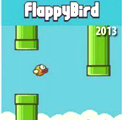题目内容
3.When people ask me why I'm so negative,I always tell them I'm simply looking out for my best interests and everyone else's.But negativity gets a bad reputation.Everywhere you look,someone's talking about the power of positive thinking.My life is good and I contribute it to imagining the worse and then being pleasantly surprised when the worst doesn't happen.Last week,I read about a report out of the Netherlands suggesting this outlook increases my chances of dying from heart disease.
This news might have moved me to change my ways,but then I saw an article about some new data from Denmark.Over the last three decades,Danes have been shown to have higher rates of"life satisfaction"than any other Western country.Their key to contentment?Low expectations.
As the article explained,Danes know they don't come from the largest,blondest or most temperate nation on the earth.They don't expect to be the winners of any game.So when good things happen,they are that much happier.
This is the philosophy I've been living for years.It's why I go to every party expecting to have a miserable time and leave for every vacation thinking it will rain.These things rarely happen,so every time things don't turn out so bad,I'm relieved and joyful.That's the power of negative thinking.
I strongly doubt if there is a sense of contentment being too positive,especially when expectation gets confused with hope.Americans seem unable to separate these ideas.Our entire belief is wrapped up in the myth of turning dreams into reality,of constantly reaching for higher goals,of never settling.Obviously,this can-do spirit turned us into the most powerful nation in the world.But I've always thought we would get better results with a belief like"the pursuit of contentment".
It is interesting how it sounds strange that people often hope to get the best,while making preparations for the worst".But that's the problem with positive thinking.Because it ignores satisfaction,which is really desirable,and runs after high expectations,which are less likely to be achieved.So let's stop being so optimistic.
29.What is the main reason why Danes have higher rates of"life satisfaction"?D
A.Danes live a rich life.
B. Danes have few social problems.
C. Danes are very optimistic.
D. Danes don't expect too much.
30.What does"this outlook"in the 2nd paragraph refer to?B
A. Positive thinking.
B. Negative thinking
C. Setting a high goal.
D. Imaging a bright future.
31.Where does the writer come from?C
A. The Netherlands
B. Denmark
C. The U.S.A.
D. Japan.
分析 本文为科教文,作者提出:生活中不要期望太高,要消极思维,不要盲目乐观.
解答 29---31 DBC
29.答案D.细节理解题.从第三段"Over the last three decades,Danes have been shown to have higher rates of"life satisfaction"than any other Western country.Their key to contentment?Low expectations."可知,他很知足,不期望太多.答案D正确.
30.答案B.细节理解题.根据第二段"My life is good and I contribute it to imagining the worse and then being pleasantly surprised when the worst doesn't happen"可知,作者总是持有一种消极态度,作最坏打算.荷兰的一篇研究报告却说持这种观点的人会增加死于心脏病的比率.所以B是对的.
31.答案C.推理题从倒数第二段"Americans seem unable to separate these ideas.Our entire belief is wrapped up in the myth of turning dreams into reality,of constantly reaching for higher goals,of never settling"可知,作者提到我们美国人,推测作者在美国,故选C.
点评 科普文阅读时要理清说明顺序.主要有空间、时间、逻辑顺序.逻辑顺序又包含从原因到结果、从主要到次要、从整体到局部、从概括到具体、从总说到分说、从现象到本质、从特点到用途等.在段落中尽量找到表示说明顺序的显著的语言标志.

 新题型全程检测期末冲刺100分系列答案
新题型全程检测期末冲刺100分系列答案| A. | the;a | B. | the; the | C. | 不填;a | D. | 不填;the |
| A. | care about | B. | turn to | C. | set up | D. | get along with |
-__________,Tommy.You can do it.( )
| A. | No problem | B. | No hurry | C. | Come on | D. | That's OK |





